ABSTRACT
Wearable devices are being explored and investigated as a promising computing platform as well as a source of personal big data for the post smartphone era. To deal with a series of rapidly developed wearable prototypes, a well-structured strategy is required to assess the prototypes at various development stages.
In this paper, we first design and develop variants of advanced wearable user interface prototypes, including joystick-embedded, potentiometer-embedded, motion-gesture and contactless infrared user interfaces for rapidly assessing hands-on user experience of potential futuristic user interfaces. To achieve this goal systematically, we propose a conceptual test framework and present a case study of using the proposed framework in an iterative cyclic process to prototype, test, analyze, and refine the wearable user interface prototypes.
We attempt to improve the usability of the user interface prototypes by integrating initial user feedback into the leading phase of the test framework. In the following phase of the test framework, we track signs of improvements through the overall results of usability assessments, task workload assessments and user experience evaluation of the prototypes.
The presented comprehensive and in-depth case study demonstrates that the iterative approach employed by the test framework was effective in assessing and enhancing the prototypes, as well as gaining insights on potential applications and establishing practical guidelines for effective and usable wearable user interface development.
RELATED WORK
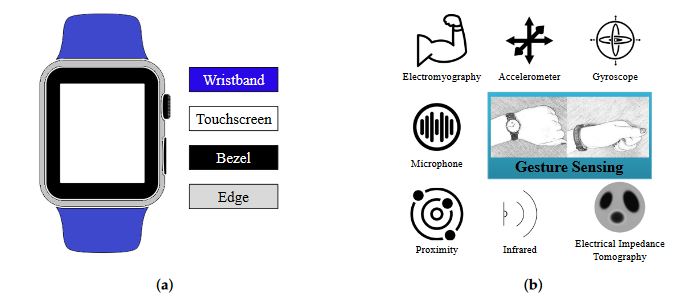
Figure 1. An overview of recent wearable UI approaches categorized as (a) Contact points in contact-based approaches; (b) Gesture sensing in contactless approaches
In this section, we review and categorize recent interaction methods for wearables into contact-based approaches as shown in Figure 1a that use direct and physical contact with the device or contactless approaches as shown in Figure 1b that capture user gestures with various sensors for triggering an interaction event.
DESIGN AND DEVELOPMENT OF ADVANCED WEARABLE UI PROTOTYPES

Figure 2. Developed joystick-embedded prototypes
The joystick-embedded UI is a contact-based UI that integrates a joystick module either as an external secondary input interface or by embedding it under a display. With this type of input interface, a user can generate four directional inputs (i.e., up, down, right and left) and a click. Figure 2 shows the different versions of joystick-embedded UI prototypes we developed.
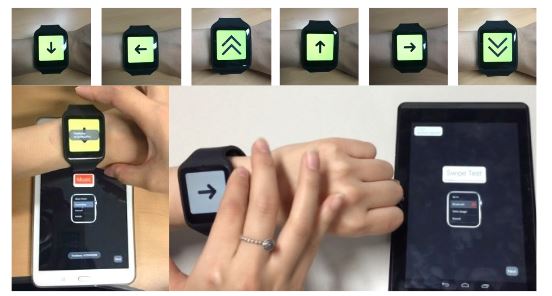
Figure 4. Developed motion-gesture based UI prototypes
Since this UI prototype relies both on user contact (tap on four sides) and contactless gesture (flicking the wrist), the motion-gesture based UI is considered a hybrid contact-based/contactless UI. Figure 4 shows the developed motion-gesture based UI prototypes in action.
A CASE STUDY WITH UI PROTOTYPES
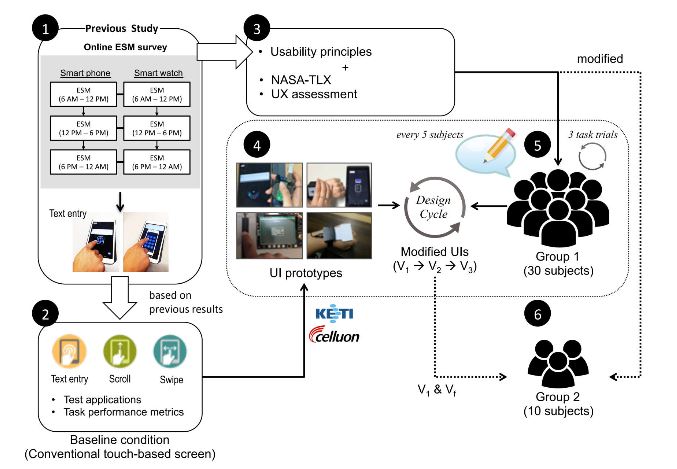
Figure 6. The conceptual test framework to conduct the usability testing for wearable UI prototypes
We designed a conceptual test framework as shown in Figure 6 aiming to iteratively test, evaluate, and improve the usability of novel wearable UI prototypes. We have previously investigated the limitations of UIs and user interaction in existing wearable devices through an online survey, based on experience sampling methods.
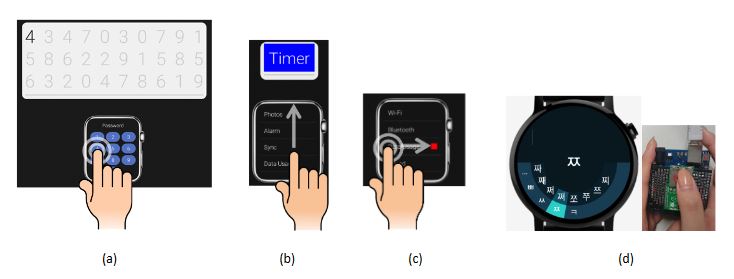
Figure 10. Exemplar illustrations of (a) Number Entry Task, (b) Scrolling Task
For the Number Entry Task, we presented our participants with a tablet (baseline UI, joystick-embedded UI; See Figure 10a), an EFM 32 Wonder Gecko (potentiometer-embedded UI), and a custom-built mockup (contactless IR-based UI) that provided a simulated proxy of a number keypad for smart watches.
RESULTS

Figure 14: This participant breakdown chart displays subject IDs in the columns
Thirty participated in phase 1 experiment and 10 participated in the Phase 2 experiment. A total of 15 participants completed the Korean Text Entry task, including 11 Korean subjects from the Phase 1 and 2 experiments as well as four Korean subjects recruited for this task only (see Figure 14 for the participant breakdown).
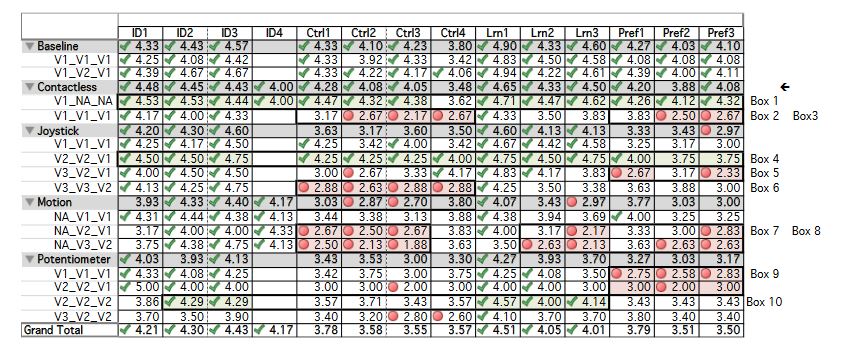
Figure 17. Usability principle evaluation
The names of UI versions are labeled with ‘_’ between the versions used for each of the given tasks. In Figure 17, we include a green check to indicate the cells that contain scores higher than 4.0 (i.e., Moderately Agree) and a red circle for the cells that contain scores lower than 3.0 (i.e., Neutral).
CONCLUSIONS
In this case study, we demonstrated that our conceptual test framework can be used to iteratively identify, remove and avoid potential problems in developing advanced-concept wearable UI prototypes. In the first phase of the test framework, we successfully improved the usability of the UI prototypes through an iterative design process. In the second phase, we conducted a comparative evaluation and demonstrated that the overall results of a usability assessment, task workload assessment and UX evaluation of the prototypes show over 20% improvement in most categories.
As a result of studying the four prototypes of representative wearable UIs, several important topics and design recommendations are elicited for future work, which include personalization of controllability, designs of effortless micro-interactions and integration of visual/haptic feedback. We hope that findings of our case study help build more usable and effective personal big data systems, especially in the context of wearable UI and UX.
Source: Carnegie Mellon University
Authors: Hyoseok Yoon | Se-Ho Park | Kyung-Taek Lee | Jung Wook Park | Anind K. Dey | SeungJun Kim